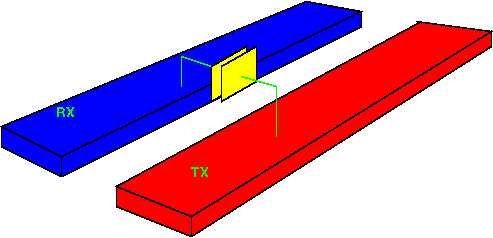Capacitive sensors are used in many places to monitor the presence of objects or distance to a conductive surface but, most commonly today these devices are part of touch screen and fingerprint used is any smart phone

Fig. 1 shows the setup used in many applications. An RF signal is applied to TX wire and a passive receiver RX is coupled via the yellow capacitor.
In this scenario the capacitor is the side wall fringing capacitor between metals. If these metals move closer or away from each other the AC coupling changes, the signal on the RX changes inverse proportional to the distance.
This principle is the same used in finger print and touch screen. For finger print a matrix of “pixels” made of metal plates cover the silicon (Fig 2). The blue and red metals represent the same TX – RX shown in fig 1 with a different arrangement.

For fingerprint this arrangement the coupling between TX – RX changes based on the ridges and valleys inside the finger, those features change the coupling between TX – RX electrodes producing an amplitude signal variation.

Fig 1 B shows the most common pixel arrangement used in capacitive sensing, Fig 1 C is another arrangement use by us. The sensor has some advantages in term of areas and functionality but the analog front end is more complicated to design.

Concat Us for more information
